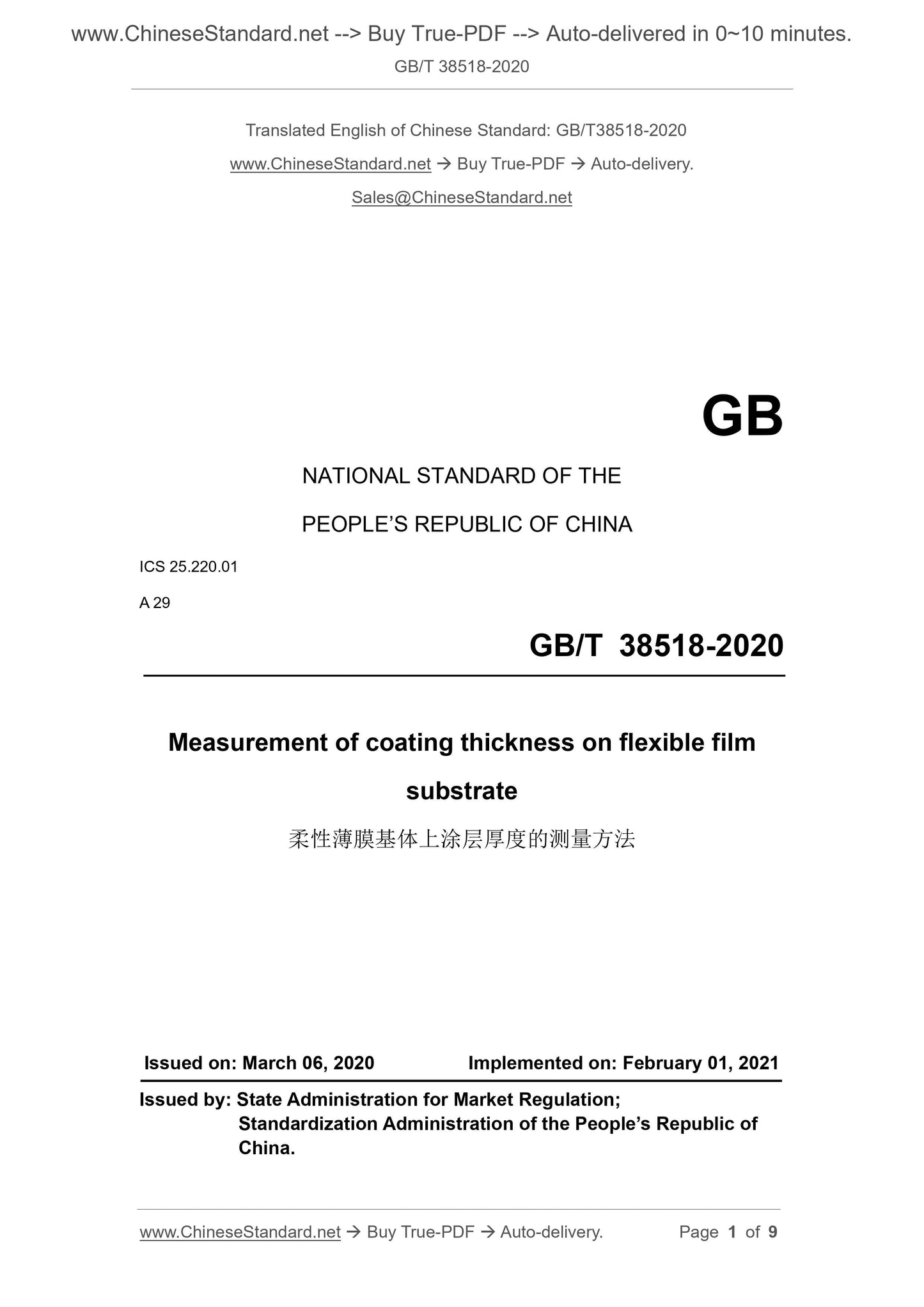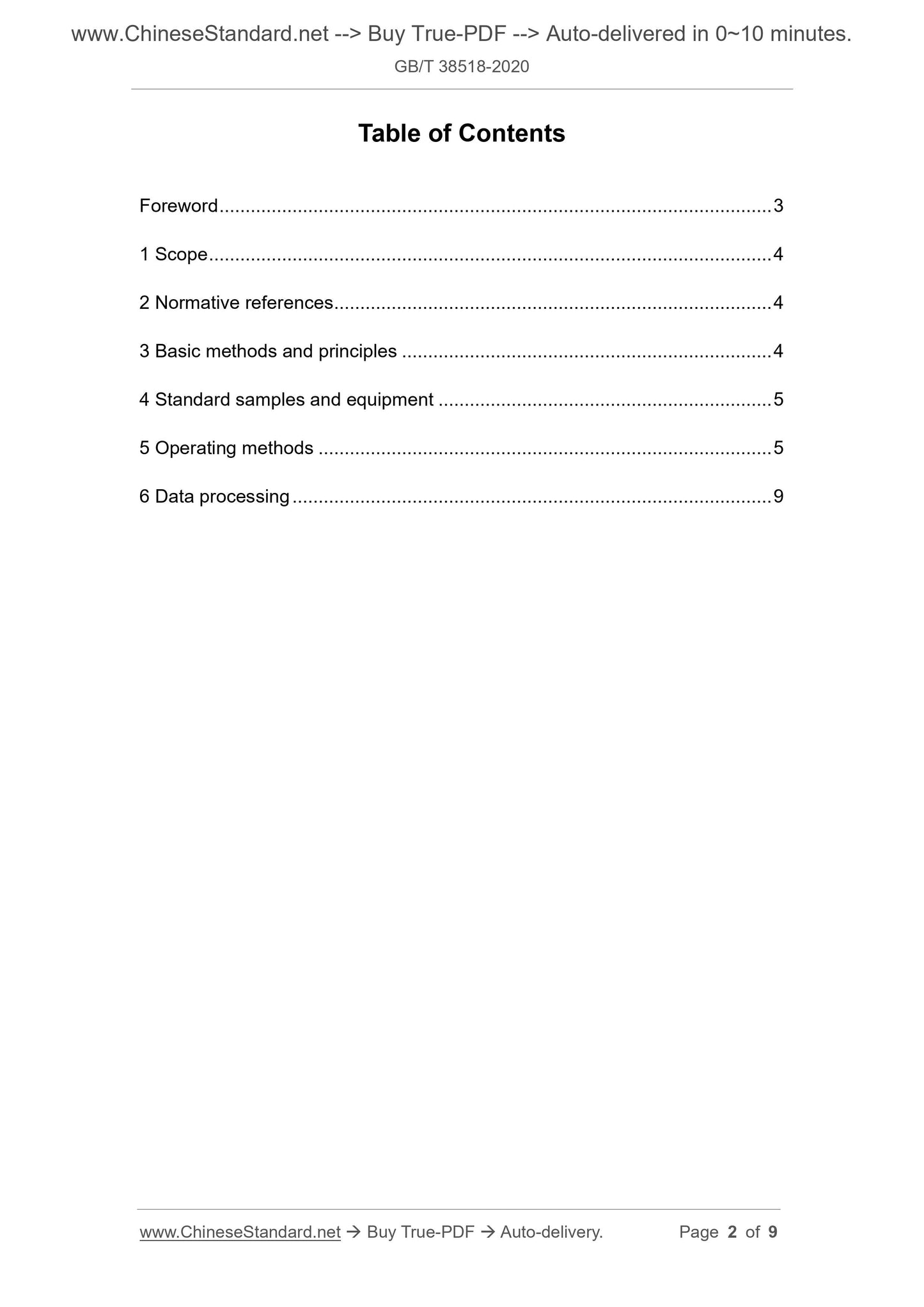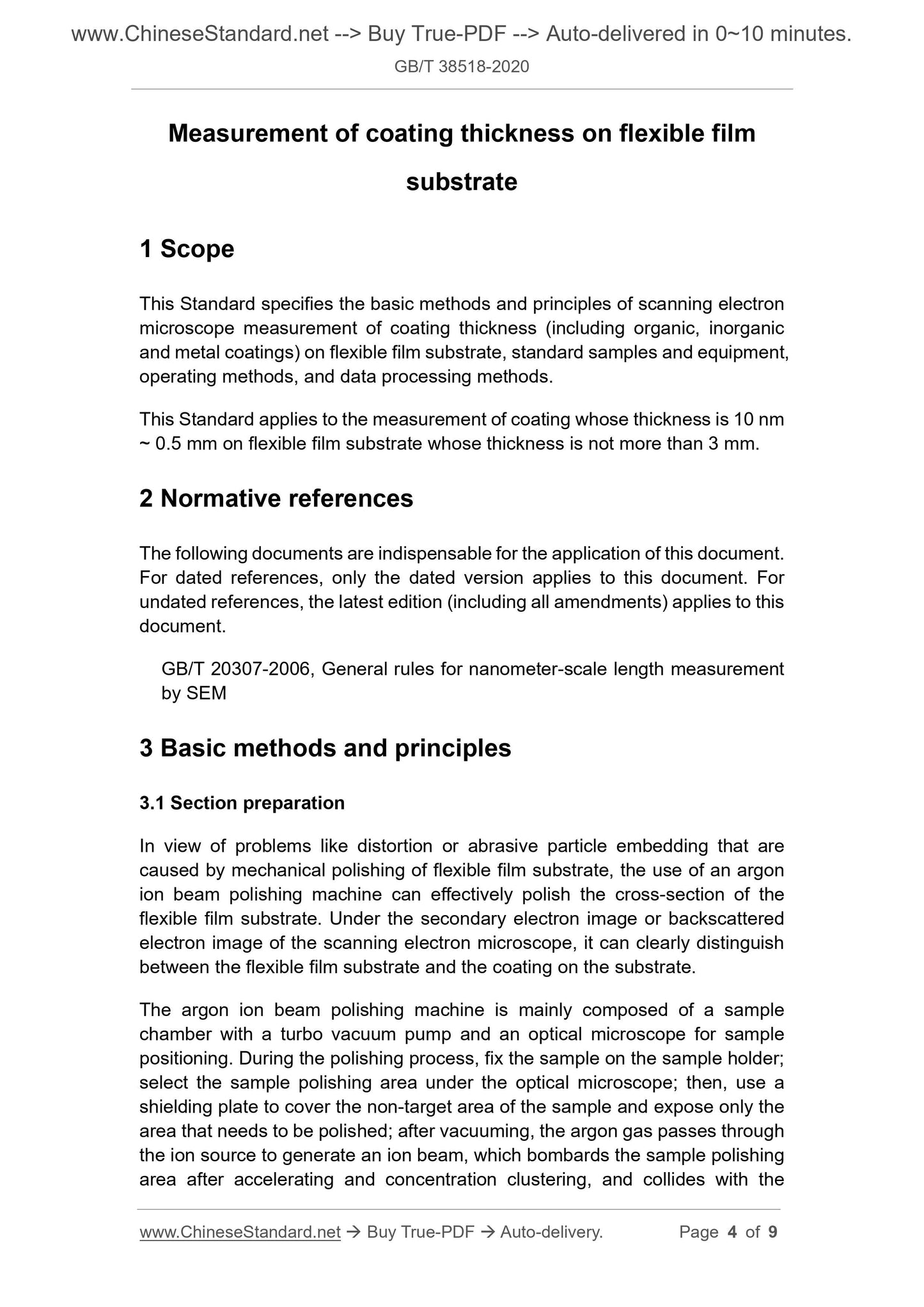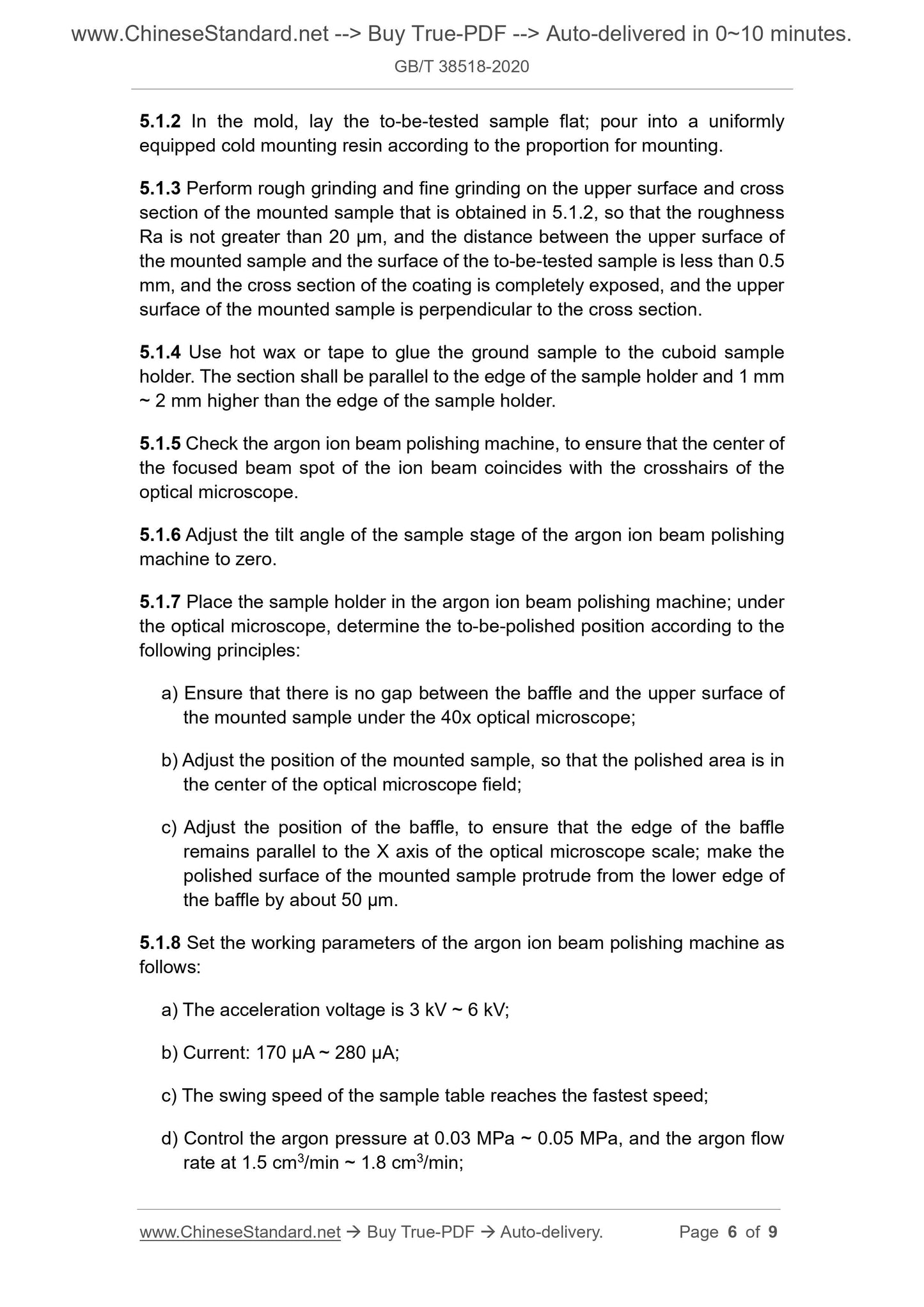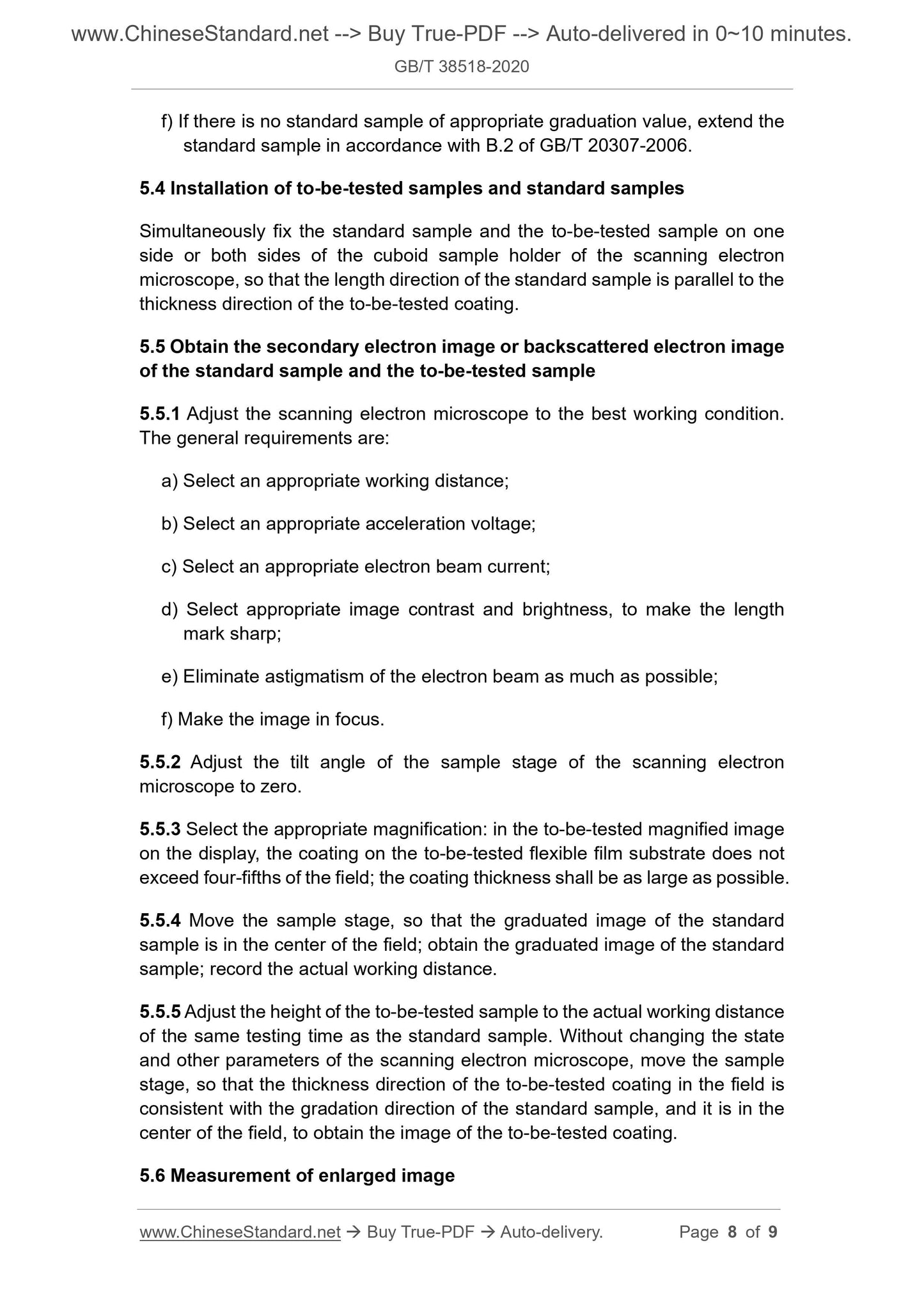1
/
of
5
www.ChineseStandard.us -- Field Test Asia Pte. Ltd.
GB/T 38518-2020 English PDF (GB/T38518-2020)
GB/T 38518-2020 English PDF (GB/T38518-2020)
Regular price
$105.00
Regular price
Sale price
$105.00
Unit price
/
per
Shipping calculated at checkout.
Couldn't load pickup availability
GB/T 38518-2020: Measurement of coating thickness on flexible film substrate
Delivery: 9 seconds. Download (and Email) true-PDF + Invoice.Get Quotation: Click GB/T 38518-2020 (Self-service in 1-minute)
Newer / historical versions: GB/T 38518-2020
Preview True-PDF
Scope
This Standard specifies the basic methods and principles of scanning electronmicroscope measurement of coating thickness (including organic, inorganic
and metal coatings) on flexible film substrate, standard samples and equipment,
operating methods, and data processing methods.
This Standard applies to the measurement of coating whose thickness is 10 nm
~ 0.5 mm on flexible film substrate whose thickness is not more than 3 mm.
Basic Data
| Standard ID | GB/T 38518-2020 (GB/T38518-2020) |
| Description (Translated English) | Measurement of coating thickness on flexible film substrate |
| Sector / Industry | National Standard (Recommended) |
| Classification of Chinese Standard | A29 |
| Classification of International Standard | 25.220.01 |
| Word Count Estimation | 6,686 |
| Date of Issue | 2020-03-06 |
| Date of Implementation | 2021-02-01 |
| Quoted Standard | GB/T 20307-2006 |
| Issuing agency(ies) | State Administration for Market Regulation, China National Standardization Administration |
| Summary | This standard specifies the basic methods and principles, standard samples and instruments, operation methods, and data processing methods for measuring the thickness of coatings (including organic, inorganic and metal coatings) on flexible film substrates by scanning electron microscopy. This standard applies to the thickness measurement of coatings with a thickness of 10 nm to 0.5 mm on flexible film substrates with a thickness of not more than 3 mm. |
Share
